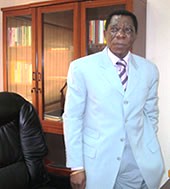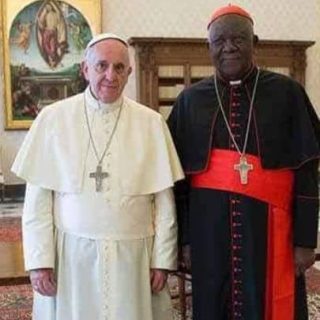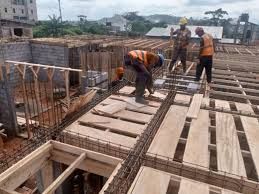2025 Presidential Election: Focus On How The Far North Region In Particular, And Grand North In General, Decides The Winner of Presidential Elections (Part 3)
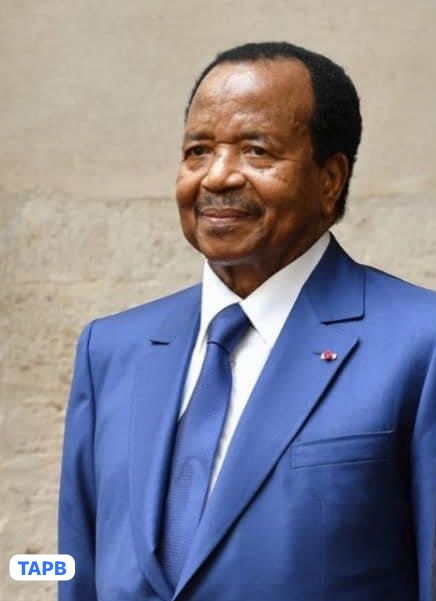
Number Of People That Voted In Far North Region Alone At 2011 Presidential Election, Almost Equaled Total Number of Persons That Voted In Littoral, NW And SW Regions Combined
At The 2011 Presidential Election, The Number of Votes That Paul Biya Grabbed In The Far North Region Alone, Was More Than What Fru Ndi Got In The Whole Country And The Diaspora
At the 2018 Presidential Election, The Number Of Votes That Paul Biya Grabbed In The Far North Region Alone, Was More Than What Maurice Kamto Got In The Whole Country And The Diaspora
In fact it is not an overstatement to say that President Biya has since the 2004 presidential election been depending on the Grand North, especially the Far North Region, to win the presidential election. As was seen at the 2011 presidential election campaign, a trip to the Maroua, the Far North Regional Headquarter, was one of the very few campaign trips that the President made. At the 2018 presidential election, the only campaign outing that President Biya made, was to the Far North Region. And that tells it all. During presidential election campaigns period in any country, the different candidates target areas where they can get substantial number of votes.
It should be noted that the particularities of the Far North Region in presidential election is the fact that it is officially known as the most populated region in the country, it always has the highest number of registered voters, and it always records high participation rates at presidential elections. All these are according to official statistics. So when a candidate scores very high in presidential election in the Far North Region, it is difficult for other candidates to catch up.
It should also be noted that nobody today know the exact population of the Far North Region, just like the other nine regions in the country. The last population census in Cameroon held in 2005, that is 20 years ago, whereas the United Nations demands that population census be conducted after 10 years.
2004 Presidential Election With 16 Candidates
Meanwhile official statistics in Cameroon show that it was thanks to the high score that President Biya recorded in the Grand North, especially in the Far North Regions, that he did not only win the 2004 presidential election, but won on a percentage as high as 70.92 %, according to the official result. A total of 16 candidates took part in the 2024 presidential election. To win a presidential election in which there were 16 candidates by 70.92 %, was definitely a big deal.
Meanwhile the 2nd in the 2004 presidential election was SDF’s Ni John Fru Ndi with a score of 17.40 %, while the third was CDU’s Dr Adamou Ndam Njoiya with a score of 4.47 %.
This was the first presidential election in which President Biya and the SDF leader, Ni John Fru met again, since the 1992 election which ended with the allegation of stolen victory. There is no doubt that the high score recorded by President Biya at the 2004 presidential election, was also definitely thanks to the support of the political parties of the Grand North, with which he had entered into alliances.
2011 Presidential Election With 23 Candidates
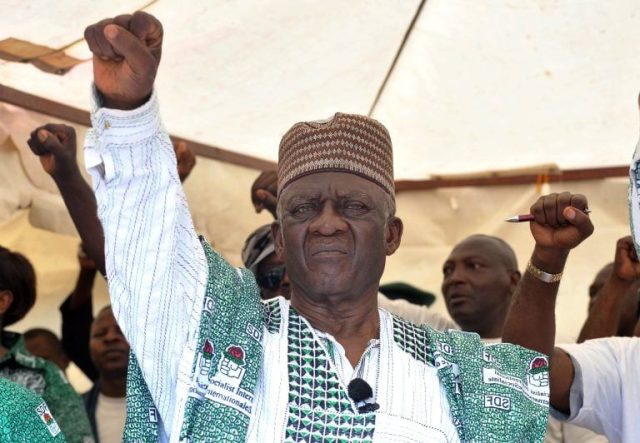
The 2011 presidential election is on record to have had the highest number of candidates in the history of presidential elections in the country. There were as many as 23 candidates. Statistics of the 2011 presidential election in general, stood as follows: No. of Registered Voters – 7,521,651. No of Votes Casts: 4,951,434. Percentage of participation: 65.82 %. No of Valid Votes: 4, 837, 249. No of Null Ballots: 114,185. Abstention: 2, 570,217. Official statistics also showed that the incumbent, Paul Biya,, who won the 2011 presidential election, grabbed a total of 3,772,527 votes, which was 77.989 %. Ni John Fru Ndi who came second in the 2011 presidential election, received 518,175 votes, which was 10.712 %.
Some official statistics of the 2011 presidential election in the Grand North Region stood as follows:
Adamawa Region: Registered voters – 437, 130. Number of votes cast – 313,922 (71.81 %). Valid votes – 308,027. Paul Biya received 265,368 out of the 308,027 valid votes, which was a score of 86.15 % , while Ni John Fru Ndi who came second in the presidential election received 5, 811 votes, which was 1.88 % of the valid votes.
Far North Region: No. of Registered Voters – 1, 436, 052. No. of Votes Casts – 1, 125, 559. Percentage of participation – 78. 37 %. Null Ballots – 26,430. Valid Ballots – 1, 099,129. Abstention – 310,493.
Out of the 1,099,129 valid votes, Paul Biya who was supported by the northern parties, grabbed 990,947 votes, which was 90.15 % of the votes, while Ni john Fru Ndi who came second in the presidential election in the country, got barely 11,775 votes, which was 1.07 % of the votes.
North Region: No of Registered Voters – 636, 326. No. of votes cast – 432,795. Percentage of participation – 68.01 %. No of Valid Votes – 418,487.
Out of the 418,487 valid votes, incumbent candidate, Paul Biya of the CPDM, who was supported by almost all the northern parties, got 354,682 votes, which was 84.75 %. Ni John Fru of the SDF who came second in the presidential election, got 5, 811 votes, which was 1.38 %.
Biya Alone Grabbed 90.15 % oF Votes In Far North
As seen above, official statistics of the detail results which show the performances of the 23 different candidates in the 2011 presidential election in the Far North Region, showed that out of the 1,099,,129 valid votes that were registered in the election, Paul Biya alone grabbed 990,947 votes, that is 90.15 % of the votes. The official statistics show that Ni John Fru Ndi who came second in the 2011 presidential election in the country with 518,175 votes (10.712 %), got barely 11,775 votes (1.07 %) in the Far North Region. Garga Haman Adji, who came 3rd in the 2011 presidential election with 155,348 votes (3.211 %), grabbed 38,871 votes (3.53 %) in his native Far North Region.
One of the things that should be noted in the these official statistics of the 2011 presidential election, is that while Biya grabbed 990,947 votes in the Far North alone, Ni John Fru Ndi of the SDF who came 2nd in the presidential election, received a total of 518,175 votes in the entire country and the diaspora. It means that the number of votes that Biya got in the Far North Region alone at the 2011 presidential election, was more than what Fru Ndi who came second in the presidential election got in the entire country and the Diaspora. Here we see the big influence which the Far North Region has on the results of presidential elections in Cameroon. This is one of the biggest challenges that the opposition in the Grand South of Cameroon face at presidential elections, but which is rarely talked about.
Votes Cast In Far North Alone, Almost Equaled Votes Cast In Lt, NW And SW Regions
Come to think of it again that at the 2011 presidential election, the number of votes that were effectively casted in the Littoral, Northwest and Southwest Regions, according to official statistics, stood as follows: Littoral – 397,961 votes. Northwest – 429,953 votes. Southwest – 397 078 votes. This gave a total of 1,224,992 votes that were cast in the 3 regions at the 2011 presidential election. On the other hand, a total of 1, 125, 559 votes were casted in the Far North Region alone, at the 2011 presidential election. This meant that the total number of votes that were casted in the Far North Region alone, was almost the same total number of votes that were casted in three regions (Littoral, Northwest and Southwest Regions). Here again we see the big influence of the Far North Region on presidential elections in Cameroon.
2018 Presidential Election With 9 Candidates
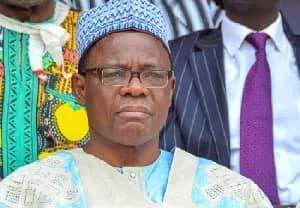
With the 2013 reforms or modifications that were made in Cameroon’s Electoral Code from 2012 -2013, there was a huge drop in the number of presidential candidates at the 2018 presidential elections, as jokers, adventurers, and opportunists were kept away. The elections organizing body in Cameroon known as Elections Cameroon (ELECAM), also claimed that it thoroughly cleaned up the Electoral Register before the 2018 presidential election.
Official statistics of the 2018 presidential election stood as follows: No. of Registered Voters – 6,667,754. No, of Votes Cast – 3, 590,681. Percentage of Participation was 53.83 %. Null Ballots were 52,716. No, of Abstentions were 3, 077, 073. According to official results, Paul Biya won the 2018 presidential election by grabbing a total of 2,521, 934 votes, which was a score of 71.28 %. Prof Maurice Kamto of MRC, who came second in the presidential election, received a total of 503,384 votes, which was a score of 14.23 %.
2018 Presidential Election In Grand North
So at the 2018 presidential election with nine candidates, the CPDM candidate, Paul Biya, with the support of the northern parties, again had a landslide victory in the Grand North.
Out of the 238,681 valid votes in the Adamawa Region, Paul Biya grabbed 190,391, which was 79.97 %. Maurice Kamto who came second in the presidential election, had 6,240 votes which was 2.61 %.
In the Far North Region, the number of registered voters was 1, 135,942, the total number of votes that were casted was 821,311, which put the percentage of participation at 72.30%. The total number of valid votes recorded was 804,189. Out of the 804,189 valid votes that were recorded, Paul Biya alone grabbed 717,442 votes, which was 89.21 %. Maurice Kamto on his part received 27.770 votes, that is, 3.45 %.
In the North Region, there were a total of 375,376 valid votes. Paul Biya received 291,674 votes, which was 81.62 %. On his part, Maurice Kamto received 14,825 votes, that is, 4. 15 %.
Biya’s Votes In Far North Region, More Than Kamto’s Votes In The Entire Country And Diaspora
Now if we get into some small arithmetic here, we will see that in the three northern regions, Paul Biya grabbed a total of 190, 391 + 717,422 + 291,671 = 1,199,487 votes (One million, one hundred and ninety nine thousands, four hundred and eighty seven votes). One his part, Maurice Kamto received a total of 6,240 + 27, 0770 + 14,825 = 48, 835 votes (Forty eight thousand, eight hundred and thirty five thousands votes). With these scores recorded by Biya (1,199, 487 votes) and Kamto (48,835 votes in the Grand North, how on earth could it have been possible for Maurice Kamto to catch up with Paul Biya. Just no way!
Official statistics show that out of the 804,189 valid votes that were recorded at the 2018 presidential election in the Far North Region, the incumbent Paul Biya, grabbed 717,442 votes which was a score of 87.21 %. Prof Maurice Kamto of MRC who came second in the 2018 presidential election in Cameroon, got barely 27,770 votes (3.45 %) in the Far North Region, while Cabril Libii Ngue who came 3rd in the presidential election, received only 22,624 votes (2.81 %) in the Far North Region.
Again one thing to note as regard the official statistics of the 2018 presidential election , is that while President Biya grabbed 707,442 votes in the Far North Region alone, Maurice Kamto that came second in the presidential election received a total of 503,384 votes, that is 14.23% in the entire country and the Diaspora. This meant that the number of votes that Biya got in the Far North Region alone was more that the total number of votes that Maurice Kamto received in the entire 10 regions of the country and the diaspora. Again, this is another demonstration of the influence that the Far North Region makes on the results of presidential elections in the country.


